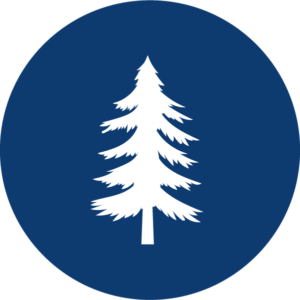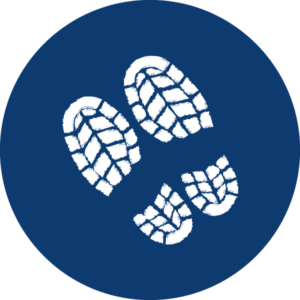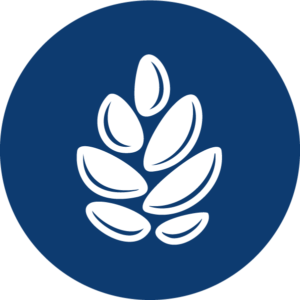
 Your Mission…
Your Mission…
Find and photograph lichen. Hint: Lichen can be found on the tree branches, rocks or fallen onto the ground.
The William Ives Trail is a peaceful walk through a natural forested reserve area, which wonders through Lacey’s Meridian Campus residential area.
The trailhead is located on Willamette Drive, ¼ mile south of Campus Drive NE, and at Meridian Neighborhood Park.
There is ample parking at Meridian Neighborhood Park located at 8855 Campus Glen Dr NE. The trailhead is across Campus Glen Drive taking a right and following the sidewalk for approximately 100 feet.
KNOW BEFORE YOU GO
The trail exits at other trailhead entrances. The best option for returning is to double back the way you came or walk the sidewalk to where you parked.
![]()

 Improving Water Quality
Improving Water Quality
By reducing pollutants that end up in stormwater that runs off our roads and other hard surfaces, we keep our streams and Puget Sound healthy!
Stormwater is rain and snow that melts and runs off rooftops, paved streets, highways and parking lots. As it runs off these hard impermeable surfaces or surfaces that water is not able to pass through, it picks up pollution like oil, fertilizers, pesticides, soil, trash, and animal manure, such as pet waste.
Most stormwater is not treated, even when it goes into a street drain or ditch. These drains flow directly into our streams, lakes, and Puget Sound’s marine waters.
What can you do to prevent stormwater pollution?
- Pick up pet waste as it is raw sewage
- Practice natural yard care and avoid weed and feed products and pesticides. Visit Grow Smart and Grow Safe https://www.growsmartgrowsafe.org/ for a guide to safer practices
- Take your car to a car wash where dirty water is treated.

 Lichen: A Cross Between Fungus and Algae
Lichen: A Cross Between Fungus and Algae
Along the trail keep your eye out for one of the many forms of lichen. Most lichens have a texture that is usually more fibrous and stiff or scaly which is different from plants such as soft mosses.
Lichens are unusual organisms. They are not a single organism like other living things but a combination of two organisms living together. There are approximately 3600 known species of lichen in North America!
Did you know? Lichens convert carbon dioxide in the atmosphere through photosynthesis into oxygen!
They also provide shelter and nesting material to small mammals and birds and they are an important winter food for our local black tail deer.
Lichens are very slow growing and very sensitive to air pollution and do not recover well from collecting or disturbance. Because they are sensitive to air pollution they make good indicators for air quality.
Check out these cool lichen and fungus photos!

 Trees
Trees
The William Ives Trail is a nature reserve island of native plants and trees surrounded by a quiet neighborhood.
See how many native trees you can identify!
Can you find the delicate needled boughs of Western hemlock? Western hemlock likes to grow where there is shade. An easy way to identify it is by the way its top drops instead of standing straight.
Next, see if you can find western red cedar. Look for a tree with fibrous or stringy cinnamon red bark, flat lacey needles and J-shaped swooping branches.

 Snag Habitat
Snag Habitat
Do you see a rotted standing tree? These standing dead trees are called snags and are a very important habitat for many species of wildlife. Birds use snags for shelter, nesting, and perching as they forage or hunt for rodents.
What birds can you think of that may use snags for their homes? Woodpeckers! The most common woodpeckers found here are downy and pileated woodpeckers.
Dead wood and stumps also provide homes for salamanders, such as the small brown forest salamander Ensatina!

 Native Shrubs
Native Shrubs
All along the trail you will find many species of native shrubs and plants.
How many can you identify?
Here is a list of native plants you will see along the way.

 Fungi
Fungi
What am I?
- I prefer dead logs and trees and the deep organic soils of the forest to grow upon.
- Mice, squirrels and banana slugs love to eat me.
- I come in all colors, yellow, white, brown, red and even blue and purple!
- I have many shapes, sometimes I stand upon my own rooted stem and sometimes I am gooey and have no shape.
- I can be found almost everywhere on the planet.
I’m fungus!

 Nurse Stumps
Nurse Stumps
Do you know what a nurse log or nurse stump is?
These are the fallen dead logs and standing dead stumps, left from bygone logging that become a fertile nursery for other shrubs and trees.
See if you can find a stump with the lacey bush of the red huckleberry growing from it.

 Non Native Plants
Non Native Plants
Some plants that we see in our forests are not native or did not originally grow here. We call these plant species invasive species or noxious weeds.
Why be concerned?
The introduction of invasive plants (and animals) can cause habitat loss for native species. Non-native, or invasive species, out compete native species as they spread faster and have no natural controls.
Can you identify any non-native plant species along the trail? Plants like herb Robert can spread their seed 20 feet from where they are. And English holly can grow dense taking over the forest. Their bright red berries are poisonous to humans and pets.

 Don’t Let Your Pet Pollute
Don’t Let Your Pet Pollute
Many of our parks and natural area trails, with the exception of Conservation Areas and the National Wildlife Refuge, are open to walking your dog on a leash.
Help protect our waters and pick up after your pet. Scoop It, Bag It and Trash It, every time, even in the woods!
 Congratulations!
Congratulations!
You have completed your mission to find and photograph lichen. Don’t forget to login to the Goose Chase App and submit your photo for this mission to collect your park specific sticker!
